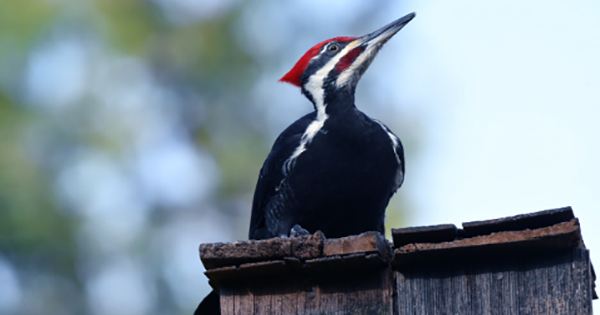When a species removed from the endangered species list, it might be a cause for celebration. In recent years, conservation initiatives have brought giant pandas and snow leopards back from the brink of extinction, manatee and grey wolf populations are rebounding, and small little snail-eating fish populations are no longer on the verge of extinction. However, there is another, far more serious reason for a species’ extinction: it no longer exists. That is what happened to 22 animal and plant species this week, according to the US Fish and Wildlife Service, who have now declared extinct.
“Each of these 23 species signifies a permanent loss to our nation’s natural heritage and global biodiversity,” said Bridget Fahey, the Fish and Wildlife Service’s chief of species categorization. “It’s also a depressing reminder that extinction is a result of human-caused environmental change,” says the author.
The ivory-billed woodpecker last officially sighted in 1944, but a handful of unverified sightings in the years afterward have kept birdwatchers returning to the Gulf States marshes in the hopes of catching its spectacular red crest. The poo-Uli, or black-faced honeycreeper, is also on the list. This little bird, which was originally exclusive to the Hawaiian island of Maui, was only found in 1973, and there were only three left in the wild by the end of the 1990s. The two females have never seen again after the sole male died in 2004.
The start of a 60-day comment process, during which scientists and members of the public can submit evidence to the Fish and Wildlife Service that they believe is relevant to the conclusion, was announced this week. The alterations will be finalized after this period, however, several researchers warn against prematurely declaring the species extinct.
When a species is proclaimed extinct, Cornell University bird researcher John Fitzpatrick told the Associated Press, “nothing is gained and much is lost.” He explained that keeping a species on the endangered list “keeps attention on it, keeps states thinking about habitat management on the off chance it still exists.”
Craig Hilton-Taylor, a senior official at the International Union for Conservation of Nature (IUCN), the world’s foremost authority on wildlife issues, agreed. “Suddenly the [conservation] money is no longer there, and then you actually push it to extinction because you stop investing in it,” he added. Many of the 23 species on this week’s hit list were already endangered before the Endangered Species Act was created in 1973, so that is unlikely to be an issue. Another bird that was originally endemic to a single Hawaiian island, the Kauai nukupuu, hasn’t been sighted since the 19th century.
“The Endangered Species Act has avoided the extinction of 99 [percent] of the plants and animals under its protection,” Tierra Curry, a senior scientist at the Center for Biological Diversity, told Gizmodo. “Unfortunately, some species were extinct or almost extinct when they were classified.” But, she warned, “we can’t let bureaucratic delays create additional extinctions” – according to the Center for Biological Diversity, several of the species on this week’s list became extinct owing to delays in the listing procedure to have them protected under the Endangered Species Act.
Despite the twin onslaughts of climate change and chronic underfunding, the Endangered Species Act has had some success – since 1975, 54 species have been removed from the endangered species list for far more positive reasons. “It’s a shame we didn’t get to [these] species in time,” Stuart Pimm, an extinction researcher, told the Associated Press. “However, we are usually able to conserve species when we do.”
















